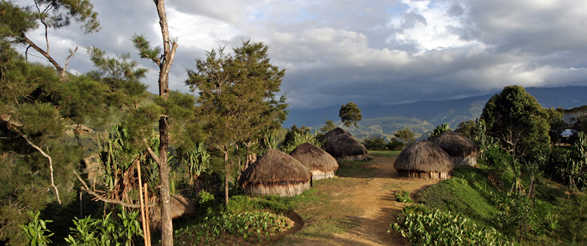
LAISEANG: Language Archive of Insular South East Asia and West New Guinea
SummaryThe LAISEANG corpus contains an unrivaled collection of multimedia materials and written documents from over 50 languages in Insular South East Asia and West New Guinea.
BackgroundThe geographical region of insular South East Asia and New Guinea is well-known as an area of mega-biodiversity. Less well-known is the extreme linguistic diversity in this area: over a quarter of the world’s 6000 languages are spoken here. As small minority languages, most of these will cease to be spoken in the coming few generations. The LAISEANG corpus ensures the preservation of unique records of languages and the cultures encapsulated by them in the region. The language resources have been gathered by twenty linguists at, or in collaboration with Dutch universities over the last 40 years, and are compiled and archived in collaboration with The Language Archive (TLA) in Nijmegen. The resulting archive constitutes an unrivaled collection of multimedia materials and written documents from over 50 languages in Insular South East Asia and West New Guinea. Through the archive, future speaker communities and researchers are able to plumb the materials for answers to their own questions, even if they do not themselves know the language, and even if the language dies.
Contacts- Project leader: Dr. Marian Klamer (Leiden University)
- CLARIN center: Max Planck Institute for Psycholinguistics
- Help contact: https://tla.mpi.nl/contact/
- Web-sites: https://tla.mpi.nl/
- User scenario's (screencasts, screenshots): n.a.
- Manual: n.a.
- Data link (IMDI browser): http://corpus1.mpi.nl/ds/imdi_browser/viewcontroller?request=view&nodeid...
- Data Link (VLO): http://catalog.clarin.eu/vlo/search?fq=collection:TLA:+LAISEANG:+Insular...
- Publications:
- Klamer, M, Trilsbeek, P, Hoogervorst, T and Haskett, C. 2017. Creating a Language Archive of Insular South East Asia and West New Guinea. In: Odijk, J and van Hessen, A. (eds.) CLARIN in the Low Countries, Pp. 113–121. London: Ubiquity Press. DOI: https://doi.org/10.5334/bbi.10. License: CC-BY 4.0
